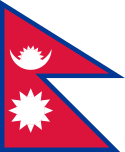Igrzyska Azjatyckie 1990
| |||
| |||
| Stolica igrzysk | Pekin | ||
| Liczba ekip | 36 | ||
| Liczba sportowców | 6122 | ||
| Liczba konkurencji | 27 | ||
| Otwarcie | 22 września 1990 | ||
| Zamknięcie | 7 października 1990 | ||
| Oficjalne otwarcie | Yang Shangkun | ||
| Znicz olimpijski | Xu Haifeng Gao Min Zhang Rongfang | ||
| Stadion | Stadion Robotniczy | ||
| Zwycięzca klasyfikacji medalowej: | |||
XI Igrzyska Azjatyckie – zawody sportowe państw azjatyckich, które odbyły się w dniach 22 września-7 października 1990 w stolicy Chińskiej Republiki Ludowej, Pekinie. Były to pierwsze igrzyska azjatyckie odbywające się w Chińskiej Republiki Ludowej. W programie igrzysk znajdowały się 34 dyscypliny.
Uczestnicy igrzysk
W XI Igrzyskach Azjatyckich wzięło udział 36 reprezentacji, będących członkami Międzynarodowego Komitetu Olimpijskiego.
Konkurencje sportowe na IA 1990
XI Igrzyska Azjatyckie rozgrywano w 27 dyscyplinach sportowych.
|
|
|
Klasyfikacja medalowa
| Miejsce | Reprezentacja | Łącznie | |||
|---|---|---|---|---|---|
| 1 | 183 | 107 | 51 | 341 | |
| 2 | 54 | 54 | 73 | 181 | |
| 3 | 38 | 60 | 76 | 174 | |
| 4 | 12 | 31 | 39 | 82 | |
| 5 | 4 | 6 | 8 | 18 | |
| 6 | 4 | 1 | 7 | 12 | |
| 7 | 3 | 6 | 21 | 30 | |
| 8 | 3 | 2 | 1 | 6 | |
| 9 | 2 | 7 | 8 | 17 | |
| 10 | 2 | 2 | 4 | 8 | |
| 11 | 1 | 8 | 14 | 23 | |
| 12 | 1 | 7 | 9 | 17 | |
| 13 | 1 | 2 | 7 | 10 | |
| 14 | 1 | 0 | 2 | 3 | |
| 15 | 1 | 0 | 0 | 1 | |
| 16 | 0 | 10 | 21 | 31 | |
| 17 | 0 | 2 | 5 | 7 | |
| 18 | 0 | 2 | 1 | 3 | |
| 19 | 0 | 1 | 4 | 5 | |
| 20 | 0 | 1 | 0 | 1 | |
| 21 | 0 | 0 | 2 | 2 | |
| 22 | 0 | 0 | 1 | 1 | |
| 22 | 0 | 0 | 1 | 1 | |
| 22 | 0 | 0 | 1 | 1 | |
| 22 | 0 | 0 | 1 | 1 | |
| Razem | 310 | 309 | 357 | 976 | |
Linki zewnętrzne
Media użyte na tej stronie
Autor: https://phabricator.wikimedia.org/diffusion/GOJU/browse/master/AUTHORS.txt, Licencja: MIT
An icon from the OOjs UI MediaWiki lib.
Autor: https://phabricator.wikimedia.org/diffusion/GOJU/browse/master/AUTHORS.txt, Licencja: MIT
An icon from the OOjs UI MediaWiki lib.
Chinese Taipei Olympic Flag. According to the official website of Chinese Taipei Olympic Committee, Blue Sky(circle) & White Sun(triangles) above the Olympic rings is neither the National Emblem of the Republic of China, nor the Party Emblem of Kuomintang (KMT), but a design in between, where the triangles do not extend to the edge of the blue circle, as registered at International Olympic Committee in 1981 and digitally rendered in 2013. Besides, the blue outline of the five-petaled plum blossom is broader than the red one. Moreover, the CMYK code of the blue one and the Blue Sky & White Sun is "C100-M100-Y0-K0", and different from the Olympic rings (C100-M25-Y0-K0). Note that it's the only version recognized by IOC.
bendera Indonesia
The Flag of India. The colours are saffron, white and green. The navy blue wheel in the center of the flag has a diameter approximately the width of the white band and is called Ashoka's Dharma Chakra, with 24 spokes (after Ashoka, the Great). Each spoke depicts one hour of the day, portraying the prevalence of righteousness all 24 hours of it.
Łatwo można dodać ramkę naokoło tej grafiki
The national flag of Kingdom of Thailand since September 2017; there are total of 3 colours:
- Red represents the blood spilt to protect Thailand’s independence and often more simply described as representing the nation.
- White represents the religion of Buddhism, the predominant religion of the nation
- Blue represents the monarchy of the nation, which is recognised as the centre of Thai hearts.
Flag of Laos
Flag of Maldives. The colours used are Pantone 186 C for red and Pantone 348 C for green.








































